
Sacred city of Anuradhapura, World heritage site
The sacred city of Anuradhapura is a UNESCO World Heritage site containing hundreds of ruins dated back to the 4th century BC to the 11th century AD. These ruins are one of the most evocative sights in the world. It has contained well-preserved brick pools and crumbling temples that are truly a collection of archaeological and architectural wonders. Among them the main sights are:
The brazen palace
“Lovamahapaya” or the brazen palace was an ancient chapter house first built by King Devanampiyatissa and later modified by King Dutugamunu in 2ndcentury BC. After the modification, it has 9 graded stories and is said to have been 100 cubits square at ground level and 100 cubits higher levels. Its roof was covered with copper-bronze plates and walls were decorated with corals and precious stones. The monks it housed were graded also! The “simple folk” on the ground floor, doctors of the teaching on the second, likewise up to the saintliest arahants on the highest of all.
The Ruvanweliseya Stupa
Ruvanweliseya, historically known as “Mahathupa” was built originally by King Dutugamunu and many kings and Queens had renovated it. Originally it was 55 m in height with the shape of a bubble floating on water.
The Thuparama Stupa
This most ancient of Sri Lanka dagobas was built by King Devanampiyatissa to enshrine the Buddha”s Collarbone relic. The graceful monolithic pillars surrounding it once supported a circular roof making the shrine a Vatadage (Circular relic house) a characteristically Sri Lankan architectural feature.
Jetavanarama Stupa
The massive brick Jetavanarama stupa is an impressive sight. It is said that there are enough bricks in it, to build a three-meter high wall, running all the way from Edinburgh to London. This was originally 122 m in height. It was built by King Mahasena (277 to 304 AD) and considered as the third tallest structure after Khufru & Khafra at Gizeh, Egypt, and the tallest stupa in the world. The doorposts of the attached image house still stand.
Abhayagiri Stupa
It was built originally by King Valagamba (89–77 BC) and then by King Gajabāhu I (113–135 AD) Abhayagiri Stupa was considered to be the fourth tallest structure in the world with a height of 115 m.
The emerging of this stupa has an interesting story according to the chronicles. During King Valagamba's first ascended to the throne, the South Indian invasion took place in 104 BC. King withdrew from the capital. During his withdrawal King gone through the area where a Jain monk named “Giri” was residing. When this Jain monk saw the king is withdrawn he cried out: "The great black Sinhala is fleeing." King ignored that comment but resolved to build a stupa where the Jain monk residing.
After 14 years King Valagamba able to defeat invaders and ascended to the throne. He built a stupa where the Jain monk residing and named it “Abhayagiri” using part of his name and rivals named “Giri”.
The Kuttam Pokuna
Translated: the 'Twin Ponds'. The most beautiful ancient pools of Anuradhapura, and possibly in the country.
The Samadhi Buddha
It is the best executed Buddha statue in the country, dating back to the 4th Century AD. The attention-grabbing detail of this statue is that once checked out from the left, Lord Buddha seems to be smiling, however, from the right, it seems a slight sadness.
The Ratna Prasada
There's not much left of this old monastery, but if you want to see some more excellent guard stones, check it out.
Mahasen's Palace
Here's to be found the best Moonstone in the entire country. Moonstone is the semicircular stone that is placed on the ground at the entrance of a temple.
Isurumuniya
This rock temple is famous due to the great bas-reliefs “Isurumuniya lovers” that has been displayed in the adjacent museum. The other interesting sculpture is “King’s Family” which can also be seen in the Isurumuniya museum. The stone carving on the living rock depicting the horse head and the man in a royal pose is interesting to witness.
Mirisawati Stupa
Mirisawati Dagoba built by King Dutugamunu was the first monument built by the king following his consecration.
Read more:
Vessagiriya forgotten murals
The sacred city of Anuradhapura is a UNESCO World Heritage site containing hundreds of ruins dated back to the 4th century BC to the 11th century AD. These ruins are one of the most evocative sights in the world. It has contained well-preserved brick pools and crumbling temples that are truly a collection of archaeological and architectural wonders. Among them the main sights are:
The brazen palace
“Lovamahapaya” or the brazen palace was an ancient chapter house first built by King Devanampiyatissa and later modified by King Dutugamunu in 2ndcentury BC. After the modification, it has 9 graded stories and is said to have been 100 cubits square at ground level and 100 cubits higher levels. Its roof was covered with copper-bronze plates and walls were decorated with corals and precious stones. The monks it housed were graded also! The “simple folk” on the ground floor, doctors of the teaching on the second, likewise up to the saintliest arahants on the highest of all.
The Ruvanweliseya Stupa
Ruvanweliseya, historically known as “Mahathupa” was built originally by King Dutugamunu and many kings and Queens had renovated it. Originally it was 55 m in height with the shape of a bubble floating on water.
The Thuparama Stupa
This most ancient of Sri Lanka dagobas was built by King Devanampiyatissa to enshrine the Buddha”s Collarbone relic. The graceful monolithic pillars surrounding it once supported a circular roof making the shrine a Vatadage (Circular relic house) a characteristically Sri Lankan architectural feature.
Jetavanarama Stupa
The massive brick Jetavanarama stupa is an impressive sight. It is said that there are enough bricks in it, to build a three-meter high wall, running all the way from Edinburgh to London. This was originally 122 m in height. It was built by King Mahasena (277 to 304 AD) and considered as the third tallest structure after Khufru & Khafra at Gizeh, Egypt, and the tallest stupa in the world. The doorposts of the attached image house still stand.
Abhayagiri Stupa
It was built originally by King Valagamba (89–77 BC) and then by King Gajabāhu I (113–135 AD) Abhayagiri Stupa was considered to be the fourth tallest structure in the world with a height of 115 m.
The emerging of this stupa has an interesting story according to the chronicles. During King Valagamba's first ascended to the throne, the South Indian invasion took place in 104 BC. King withdrew from the capital. During his withdrawal King gone through the area where a Jain monk named “Giri” was residing. When this Jain monk saw the king is withdrawn he cried out: "The great black Sinhala is fleeing." King ignored that comment but resolved to build a stupa where the Jain monk residing.
After 14 years King Valagamba able to defeat invaders and ascended to the throne. He built a stupa where the Jain monk residing and named it “Abhayagiri” using part of his name and rivals named “Giri”.
The Kuttam Pokuna
Translated: the 'Twin Ponds'. The most beautiful ancient pools of Anuradhapura, and possibly in the country.
The Samadhi Buddha
It is the best executed Buddha statue in the country, dating back to the 4th Century AD. The attention-grabbing detail of this statue is that once checked out from the left, Lord Buddha seems to be smiling, however, from the right, it seems a slight sadness.
The Ratna Prasada
There's not much left of this old monastery, but if you want to see some more excellent guard stones, check it out.
Mahasen's Palace
Here's to be found the best Moonstone in the entire country. Moonstone is the semicircular stone that is placed on the ground at the entrance of a temple.
Isurumuniya
This rock temple is famous due to the great bas-reliefs “Isurumuniya lovers” that has been displayed in the adjacent museum. The other interesting sculpture is “King’s Family” which can also be seen in the Isurumuniya museum. The stone carving on the living rock depicting the horse head and the man in a royal pose is interesting to witness.
Mirisawati Stupa
Mirisawati Dagoba built by King Dutugamunu was the first monument built by the king following his consecration.
Read more:
Vessagiriya forgotten murals

 +39 - 39 - 307 6 3730
+39 - 39 - 307 6 3730 +94 - 74 - 000 9208
+94 - 74 - 000 9208











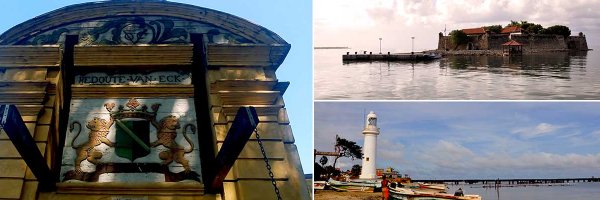

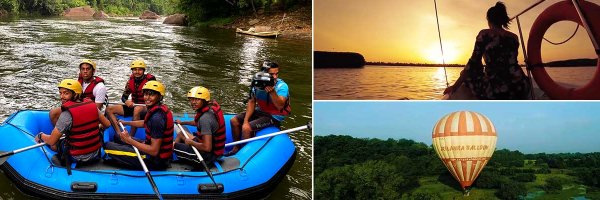



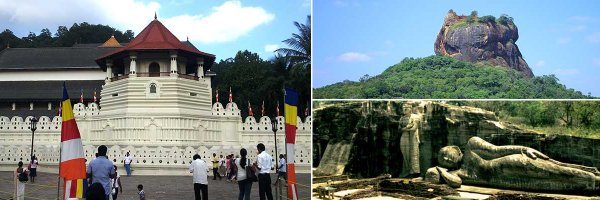
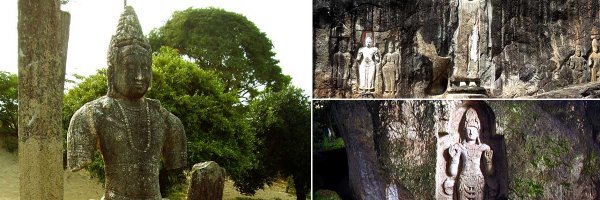

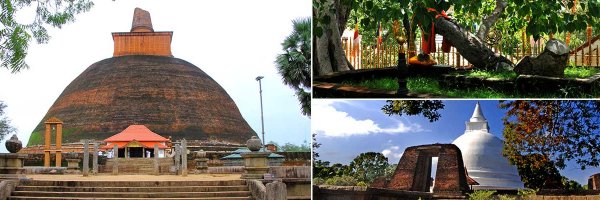

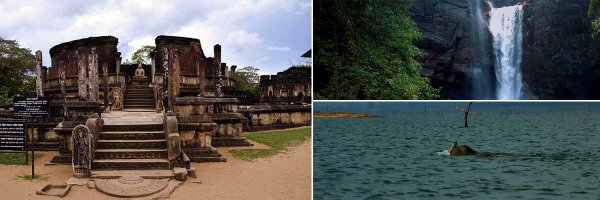




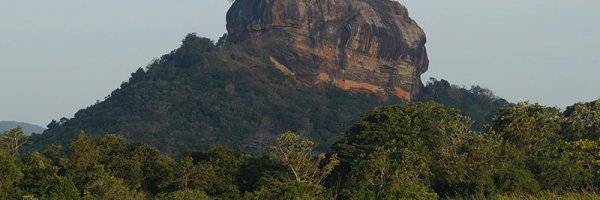
Share this page